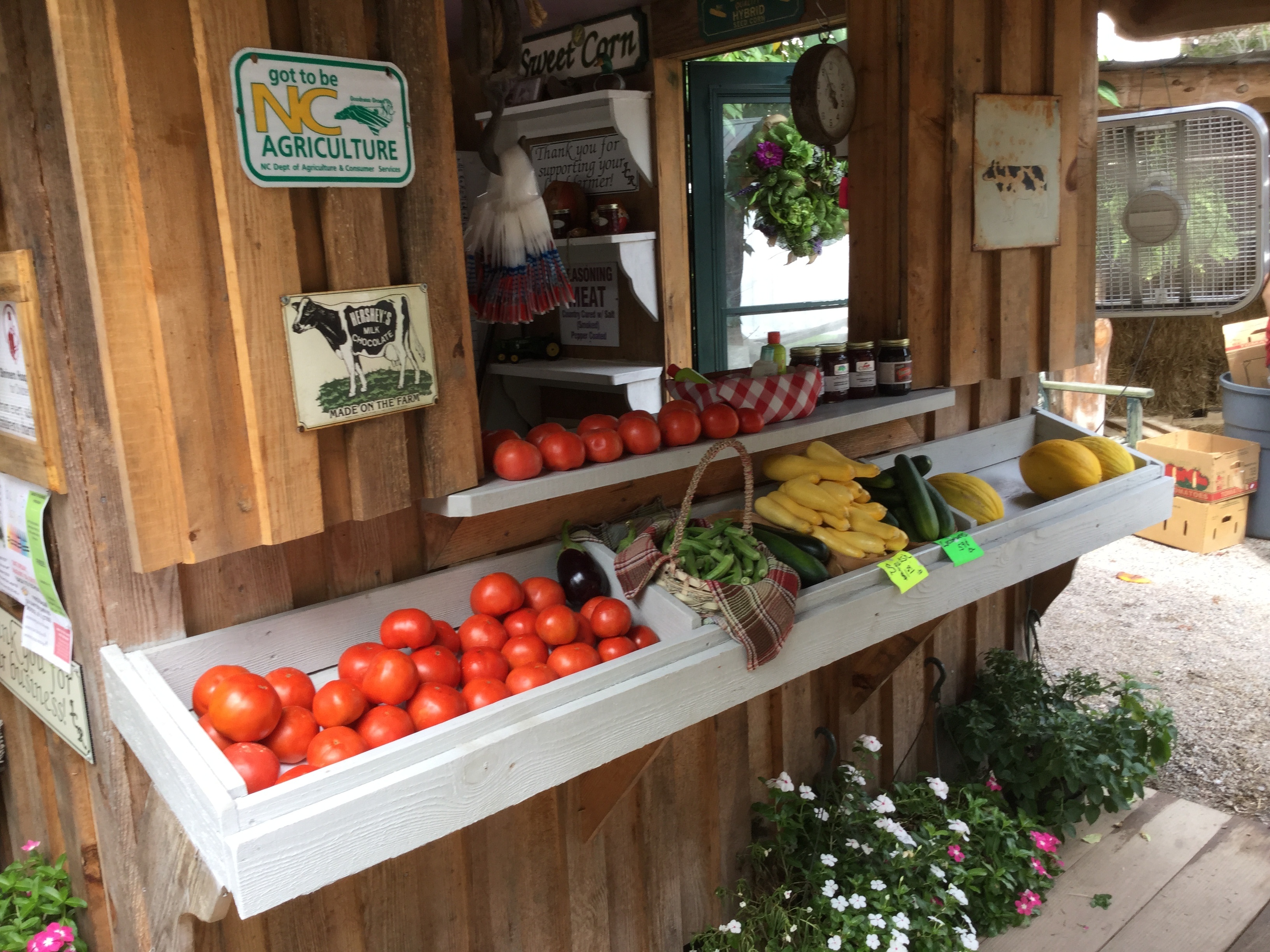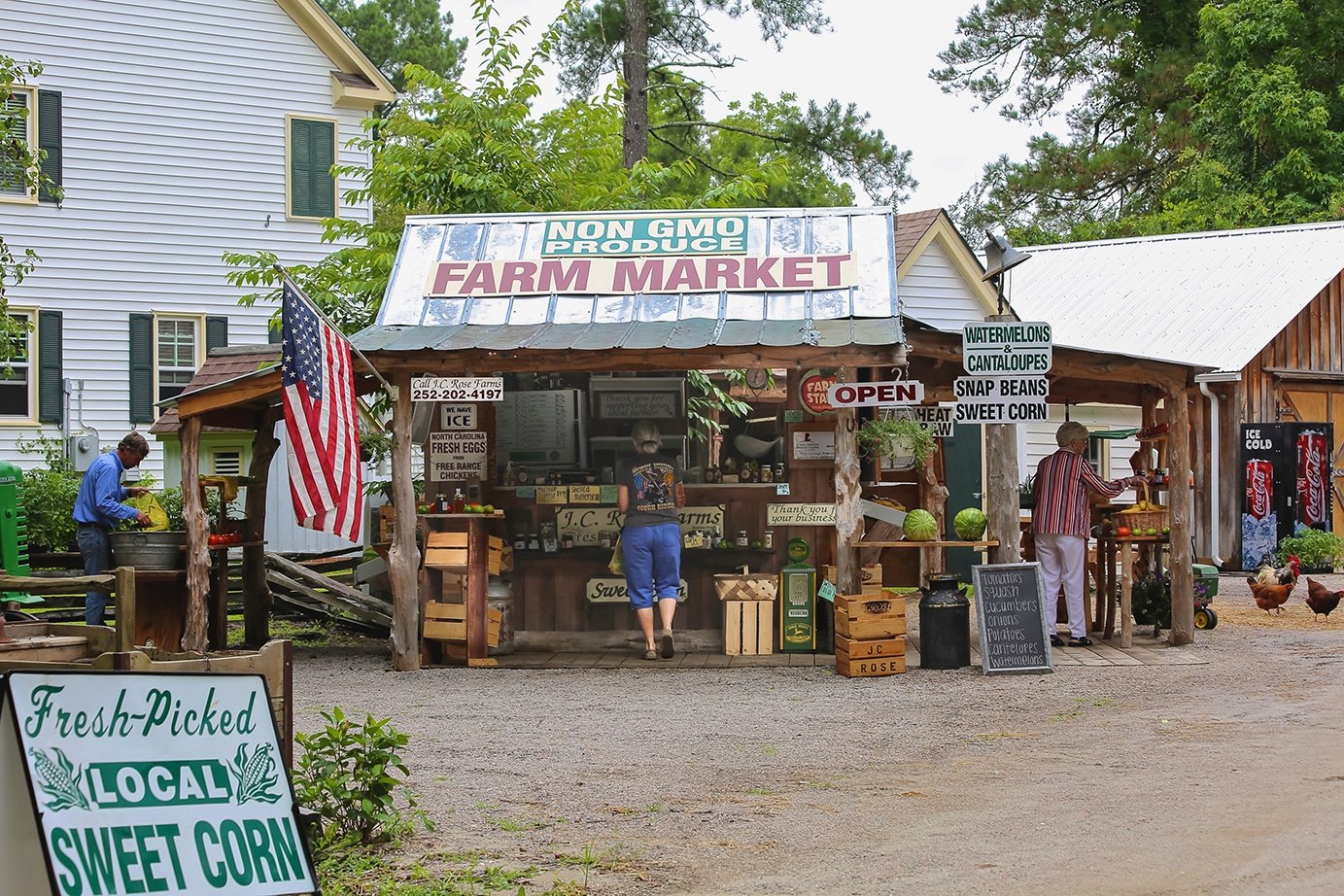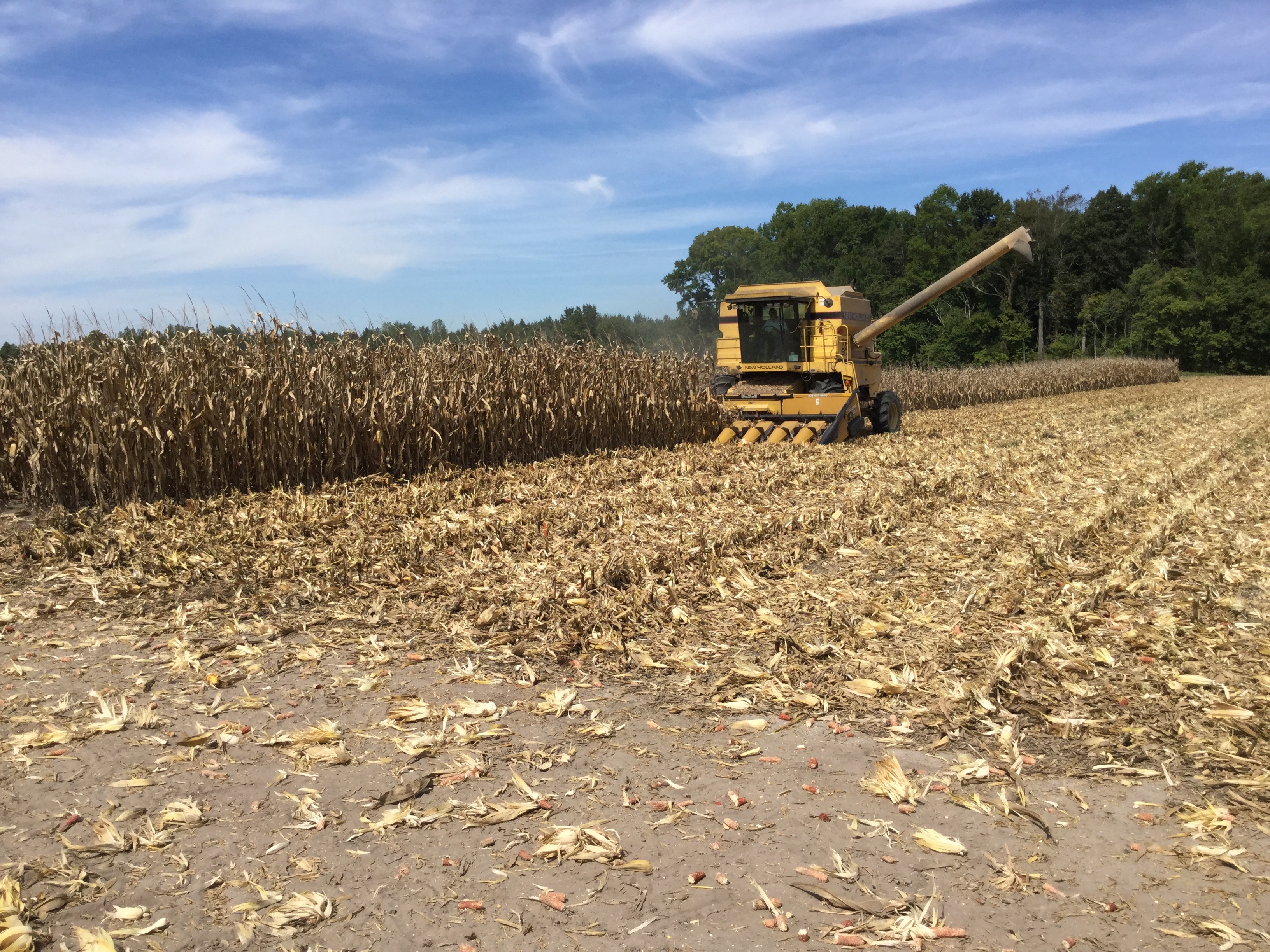

What image comes to mind when you think of entrepreneurs and startups?
Is it a downtown office full of twenty-somethings with laptops, scooters and a ping-pong table? Or a nervous contestant on Shark Tank trying to convince Mark Cuban to invest in a line of Velcro neckties?
Odds are pretty good that what pops into your head is NOT a couple of farmers standing in a field of arugula.
But maybe it should be.
Growing things is big business in America. According to the United States Department of Agriculture (USDA), agriculture, food, and related industries contributed $992 billion to U.S. gross domestic product (GDP) in 2015 and the output of America’s farms contributed $136.7 billion of this sum—about 1% of the nation’s GDP.
It's just as big here in the Tar Heel State.
North Carolina is recognized as the nation’s number one provider of flue cured tobacco and sweet potatoes. Agriculture makes a $78 billion economic impact and contributes 16% of state jobs. Combine agriculture and agribusiness and you get the state’s largest sector of the economy which contributes 17% ($84 billion) of North Carolina’s $482 billion gross state product economy.
Here in Currituck County? Agriculture makes a $50 million impact and accounts for about 8% of total jobs.
You don’t need to be a local historian to understand that farming and agriculture were a key part of the county’s past. There are still plenty of active farms and open fields to remind residents and visitors that our economic growth was once rooted in the soil.
But as our population continues to grow and there are more plans for development on the horizon: Where will farming and agriculture fit in the Currituck County of tomorrow? What lies ahead for agriculture and agribusiness in Currituck County?
We asked Cameron Lowe from North Carolina Cooperative Extension where agriculture may be headed. Cameron is the County Extension Director for Currituck & Camden.

Probably the biggest opportunity is getting on board with the local foods movement.
Over the last few years here in Currituck, we’ve seen an uptick in small fruits and vegetable producers who are direct marketing to consumers. We have a lot of great local stands and markets, but it’s very difficult to grow enough on your own land to meet the demand from tourists.
Most of our local markets ship in at least some of their produce. That’s because you just can't grow tomatoes here from May to September, it's not going to happen. But you have to get them from somewhere because the demand is there.
Local restaurants are a great opportunity. The industry is ripe for folks who can direct market fruits, vegetables and herbs. If you look at the number of restaurants located on the Outer Banks of North Carolina, and even Southeastern Virginia, it’s a huge market with lots of potential.
It’s very difficult to get into corn, wheat or soybeans if you're just starting as a farmer, because of the scale at which you need to produce and the enormous input costs. When it comes to agribusiness in Currituck County, those smaller niches are where the best opportunities live.
We’re part of a partnership between two universities (NC State and North Carolina Agricultural and Technical State University) and local government. We're also affiliated with the United States Department of Agriculture (USDA) and the North Carolina Department of Agriculture and Consumer Services.
Basically, what we do is conduct research and education. We do a lot more than that, but our main focus in agriculture is to provide research and education to help farmers and agribusiness folks remain profitable, sustainable and environmentally conscious.
We help them learn the latest trends and techniques in agriculture. We let them know which crop varieties are performing best, which chemicals they need to use, how to meet regulatory requirements. We help them keep up to date on their certifications and things like that. We provide an educational research base that helps them get things going and keep things running smoothly.
Oh certainly, we have worked with nearly every single one of the farmers on our list in some way or another over the course of their business.
We're also working with youth, teaching them agricultural literacy, leadership skills and advocacy skills. We're working with families to show them how to use more local produce in their cooking, teaching them how to preserve, how to grow their own and how to preserve their own.
Agriculture is a big part of what we do, but we’re also deeply committed to family and youth development.

Not necessarily. Not here. Young people in Currituck County are pretty agriculturally literate. We want to keep them agriculturally literate.
Currituck has a thriving Future Farmers of America (FFA) program at our high schools. We have a thriving
4-H program. But we're not only preparing our young people for careers in agriculture. We do just as much to get them ready for jobs in science, technology, engineering and math (STEM).
Absolutely. We just wrapped up our 4-H embryology project. Every second-grade classroom in Currituck County received an incubator and hatched ducks. They’ve been given to wildlife management programs and they'll be released into the wild.
While our average farm size and number of working farmers is decreasing, our total farm acreage has actually increased a little in the last ten years.
Total farmland in Currituck has risen from about 34,800 acres in 2002 to 35,000 acres in 2012, but that's in certain specific areas of the county. In the northern parts of the county, we're obviously losing quite a bit of land to housing development. In the center part of the county, which is our prime farmland area, we've managed to stay pretty consistent. It all depends on what part of the county you're looking at.
Certainly… especially for small farmers. You really have to be an astute businessman to make a farming operation work. Farmers dealing with less than 200 acres struggle to be profitable because input costs are so high. If you’re growing cash crops like corn, wheat, or soybeans, input costs are incredibly high and it’s even more difficult to be profitable. Plus, one bad year can put you really behind.

I think if we're smart, we can plan for it.
There are all kinds of incubator farm concepts and farming neighborhood concepts and different, innovative solutions that are happening all over the country. If we try to replicate some of those efforts, we could do some neat things in terms of development that respects our agriculture and makes it a cornerstone of our communities.
Yes I am. I’m encouraged because I’m seeing a kind of agricultural renaissance.
More people are getting into gardening and subsistence living. More people are starting to grow their own food and seeking more local food sources. It’s great because they want to know where their food comes from. There's definitely been a shift toward more agricultural awareness in our community.
People are seeking information, they're seeking opportunities. So yes, I feel that there’s a market for growth in the agriculture industry in Currituck County.
It might not be what we've always seen it as, it may look even more different in the years to come, but I really think there are great opportunities for growth.
These Stories on Agriculture
No Comments Yet
Let us know what you think